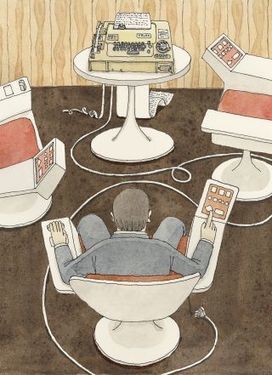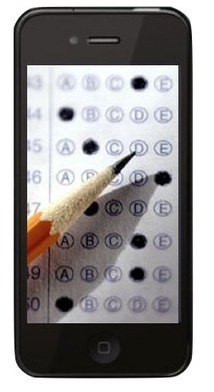Get Started for FREE
Sign up with Facebook Sign up with X
I don't have a Facebook or a X account
 Your new post is loading... Your new post is loading...
 Your new post is loading... Your new post is loading...

luiy's curator insight,
October 14, 2014 7:40 AM
The consultant, Stafford Beer, had been brought in by Chile’s top planners to help guide the country down what Salvador Allende, its democratically elected Marxist leader, was calling “the Chilean road to socialism.” Beer was a leading theorist of cybernetics—a discipline born of midcentury efforts to understand the role of communication in controlling social, biological, and technical systems. Chile’s government had a lot to control: Allende, who took office in November of 1970, had swiftly nationalized the country’s key industries, and he promised “worker participation” in the planning process. Beer’s mission was to deliver a hypermodern information system that would make this possible, and so bring socialism into the computer age. The system he devised had a gleaming, sci-fi name: Project Cybersyn.

Randy Rebman's curator insight,
January 28, 2013 12:33 PM
This looks like it might be a good source for integrating infographics into the classroom. |

EL OBSERVATORIO DIGITAL's curator insight,
November 20, 2016 4:34 PM
Social media y Big data, ¿Qué son?

Milena Bobeva's curator insight,
March 1, 2014 4:10 AM
Social Network Analysis should be a paradigm for researching, designing, and evaluating not only online learning, but the wider phenomenon of Education 3.0 
luiy's curator insight,
March 1, 2014 7:21 PM
The connections within nodes in a network facilitate exchange of “resources” which can be influenced by the quantity and quality of the linkages and interactions. Looking at online educational networks through a SNA lens is a way to establish wether the ways in which individuals connect with a particular environment may influence their access to information and knowledge. As Rita Kop states “the Web is portrayed as a democratic network on which peer to peer interaction might lead to a creative explosion and participative culture of activity” (Kop, 2012 p3) but how is this potential being exploited in education? What are the processes beyond this interaction and how can they be used to facilitate students access to information, knowledge and ideas?
The potential of social media in forming networks, extending students knowledge and translating this into academic achievement is impacted by a multitude of elements such as individuals’ attitudes (Morrison, 2002), University environment and socialisation processes (Yu et al., 2010). Other mechanisms influencing this process may be the particular educational practices and experiences, the success of connections, the dynamics in which participants negotiate the structure of the network and exchange practices and many others which can not be controlled.
This analysis can be enriched by Bordieau’s concept of “social capital”, which introduces a set of dynamics between the social dimension, the identity dimension (habitus) and the individual’s practice. In this system of reciprocal influences it is interesting to look at the transformation processes and effects of elements such as “weak ties”, “brokers”, “latent connections” and “structural holes” in the information flow within a network. |

















